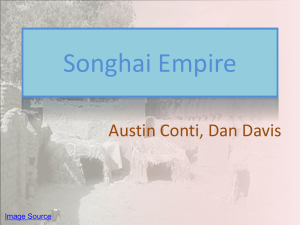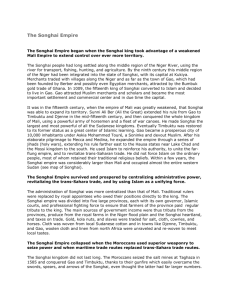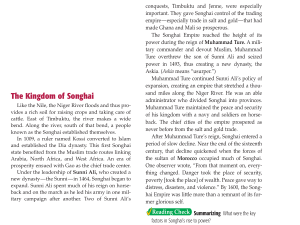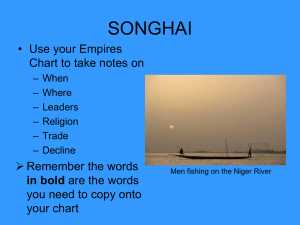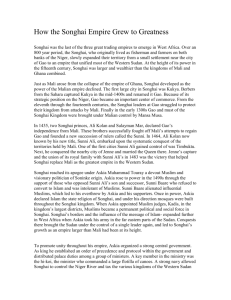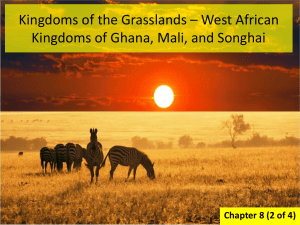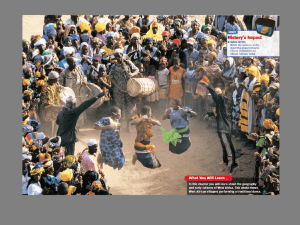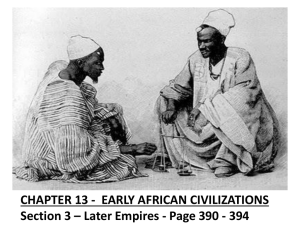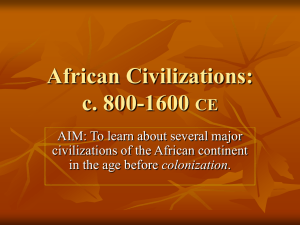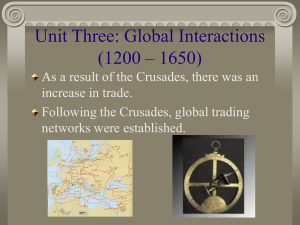By: Nick Guirard, Coral Briber, Caitlyn Smith, and Emma Morse The
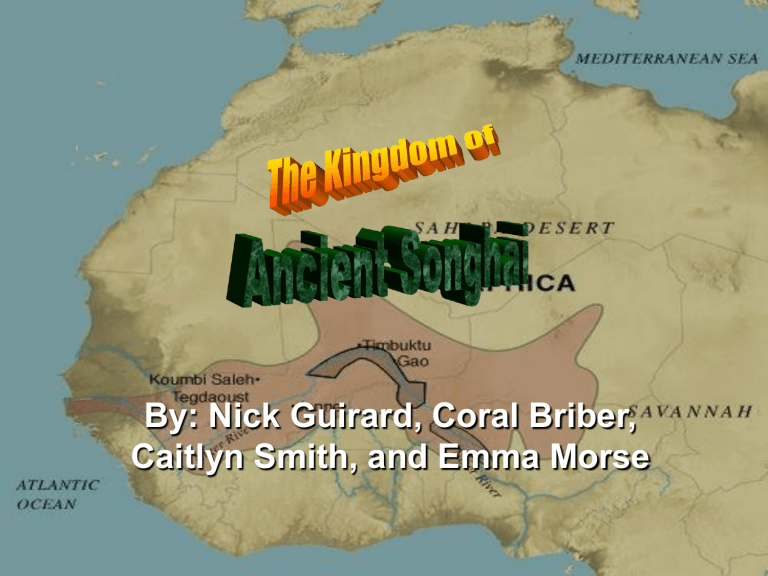
By: Nick Guirard, Coral Briber,
Caitlyn Smith, and Emma Morse
• There are not many mountains near the songhai kingdom.
• Some other parts of Africa, there soil was becoming really dry making it hard to farm so everyone moved west words in the direction of songhai because of the good soil.
• Most land forms in songhai were rivers, grass lands and deserts.
• The most important desert was the Sahara desert a huge desert covering the northern side of Africa
• Songhai is located in west Africa
• Songhai has four different kingdoms/civilization covering
Songhai,1 Koumbia 2 Timbuktu 3 Gao 4 Jenne.
• The Niger river runs through Songhai
.
• The nobles were Muslims.
• They were polytheistic.
• All the leaders were Muslim.
• The Africans obeyed strict Muslim laws.
• The people of Songhai also followed the African religions of witchdoctors, spirits, and magic.
• The African people followed Sohanti.
• Songhai had a central government.
• At one time Songhai was the leading kingdom of ancient
Africa.
• Sonni Ali was one of the best leaders of Songhai.
• Sonni Ali stretched Songhai over 2,000 miles.
• Askia Muhammad set up a Muslim dynasty.
• Songhai’s leaders controlled trade routes and the sources of gold and salt.
Sonni
Ali
• Songhai became a powerful civilization because of trade and conquest
• Songhai had a well trained army to conquer other lands and protect their land
• Songhai conquered Timbuktu in 1468 AD
• This expanded their empire to 2,000 miles of land
• Songhai was located near the Niger River
• The river was important for trading many goods such as:
– Gold
– Salt
– Kola nuts
– Slaves
• They also imported
– Textiles
– Horses
– Luxury goods
• Luxury goods, such as books, were greatly valued in Songhai
• Traders traded books for large amounts of gold
• Common jobs in ancient
Songhai were fishermen, farmers, miners, and witchdoctors.
• Common people mined gold and salt.
• Books were greatly valued in Songhai.
• Educated people were valued as well.
• Nobles and kings had magnificent homes.
• Most people didn’t have magnificent homes.
• People ate farmed goods, including beans, rice, onions, cattle, sheep, and poultry.
• They also ate fish.
(contd.)
Slides:
Geography and Maps: Coral Briber
Religion and Leadership: Caitlyn Smith
Economy and Trade: Emma Morse
Culture: Nick Guirard
Thanks for watching
